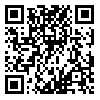BibTeX | RIS | EndNote | Medlars | ProCite | Reference Manager | RefWorks
Send citation to:
URL: http://ppj.phypha.ir/article-1-1364-en.html
Introduction: A specific role of dopamine D2 receptor signaling of midbrain and hypothalamic dopaminergic systems has not been yet identified in energy homeostasis. Here, we investigated effects of intra-ventromedial hypothalamus (VMH) administration of the D2 receptor agonist (quinpirole) and antagonist (sulpiride) on plasma leptin and glucose levels in fasted rats. Methods: A guide cannula was stereotaxically implanted in the VMH of male Wistar rats (n=6/group). In experiment day, the fasted rats (20-24h) received a recommended dose of D2 receptor agonist (quinpilroe: 0.5μg), antagonist (sulpiride: 0.005μg) and saline (0.5μl) injected into the VMH. Blood samples were collected at 0, 30 and 60 min after injection, and plasma leptin and glucose were measured by Eliza kit and glucose oxidase method, respectively. Results: Plasma leptin significantly increased in a time dependent manner in quinpirole group compared to control (P<0.01), while sulpiride markedly suppressed it (P<0.001). Increase in glucose levels was time dependently robust in quinpirole group (P<0.00). A significant reduction was observed in glucose levels in sulpiride compared to control group (P<0.05). There was also a negative correlation between glucose and leptin plasma levels in drug-treated rats. Conclusion: These data suggest that altered the VMH D2-mediated neurotransmission might contribute to an alteration in the metabolic phenotype (leptin secretion and plasma glucose level) of rats.
| Rights and permissions | |
 |
This work is licensed under a Creative Commons Attribution-NonCommercial 4.0 International License. |






